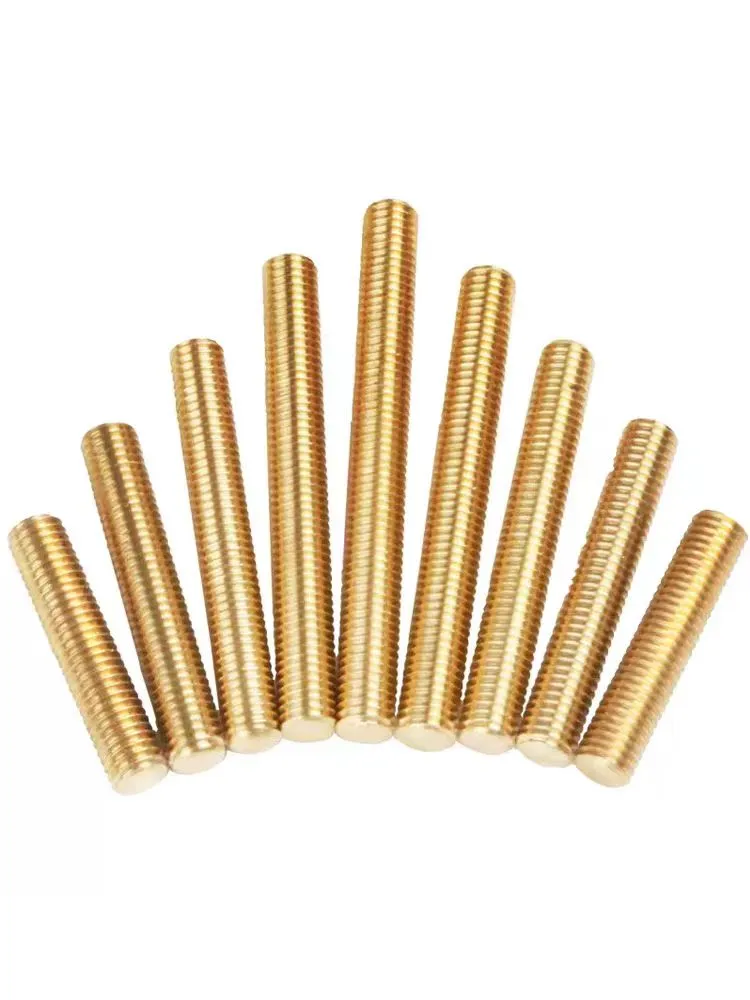

astm a325 structural bolts
Nov . 26, 2024 08:00 Back to list
astm a325 structural bolts
Understanding ASTM A325 Structural Bolts Key Specifications and Applications
When it comes to structural engineering, the importance of reliable fastening systems cannot be overstated. Among the various types of bolts used in construction, ASTM A325 structural bolts are among the most critical. These heavy hex bolts are designed for high-strength applications, ensuring that structures can withstand significant loads and environmental stresses. In this article, we will explore the specifications, characteristics, and applications of ASTM A325 structural bolts, highlighting why they are an essential component in modern construction.
What is ASTM A325?
ASTM A325 is a standard specification from the American Society for Testing and Materials (ASTM) that covers the requirements for high-strength structural bolts. These bolts are primarily intended for use in structural steel connections, where they serve as a vital component for ensuring the integrity and stability of structures. The standard outlines the mechanical properties, manufacturing processes, and testing methods necessary to certify high-strength bolts that can perform under demanding conditions.
Specifications and Requirements
ASTM A325 bolts are typically made from medium carbon steel, which may be either heat treated or thermally treated to enhance strength. The standard specifies three grades of A325 bolts, each with distinct mechanical properties
- A325 Type 1 These are made from high-strength steel and are typically used in structural applications where slip-critical connections are required. - A325 Type 2 This type is similar to Type 1 but has a different coating to improve corrosion resistance. - A325 Type 3 These bolts are designed for use in highly corrosive environments and are often coated or made from weathering steel.
The specification includes details about bolt dimensions, mechanical properties (such as yield strength and tensile strength), and allowable tolerances. For example, ASTM A325 bolts typically have a minimum yield strength of 92 ksi (kilopounds per square inch) and a minimum tensile strength of 120 ksi, making them suitable for heavy-duty applications.
Manufacturing Process
astm a325 structural bolts

The manufacturing of A325 structural bolts involves several steps, including hot forging and heat treatment. The heat treatment process is vital, as it significantly improves the mechanical properties of the bolts. After manufacturing, bolts undergo rigorous testing, including tensile tests, to ensure they meet the specified strength requirements. Additionally, surface coatings may be applied for corrosion resistance, thus extending the lifespan of the bolts in harsh environments.
Applications in Construction
ASTM A325 structural bolts play a pivotal role in various construction applications. Their high-strength properties make them ideal for use in steel structures like bridges, buildings, towers, and other infrastructure projects. They are commonly used in
1. Steel Frame Construction A325 bolts are often used to connect steel beams and columns, ensuring that the structure remains stable under load.
2. Bridges Due to their ability to withstand dynamic loads and environmental factors, A325 bolts are frequently used in bridge construction and repair.
3. Wind Turbines The renewable energy sector heavily relies on A325 bolts due to their strength and reliability in securing wind turbine components.
4. Heavy Machinery In industries where heavy machinery is employed, A325 bolts secure crucial components together, ensuring operational safety and efficiency.
Conclusion
ASTM A325 structural bolts are a vital part of modern construction, providing strength, reliability, and safety in various applications. Their stringent specifications and rigorous testing processes ensure that they can withstand the demands of the built environment. By understanding the characteristics, specifications, and applications of A325 bolts, engineers and construction professionals can better appreciate their importance in achieving durable and reliable structures. As we move forward in the realm of construction and engineering, A325 bolts will undoubtedly continue to play a crucial role in shaping the infrastructure of our world.
Latest news
-
Premium Fasteners Manufacturer | AI-Driven Solutions
NewsAug.01,2025
-
Hot Dip Galvanized Bolts - Hebei Longze | High Strength, Corrosion Resistance
NewsAug.01,2025
-
High-Strength Hot Dip Galvanized Bolts - LongZe | Corrosion Resistance, Custom Sizes
NewsAug.01,2025
-
Best Self Tapping Screws for Drywall - Fast & Secure Installation
NewsJul.31,2025
-
High-Strength Hot Dip Galvanized Bolts-Hebei Longze|Corrosion Resistance&Customization
NewsJul.31,2025
-
Hot Dip Galvanized Bolts-Hebei Longze Metal Products|Corrosion Resistance&High Strength
NewsJul.31,2025

